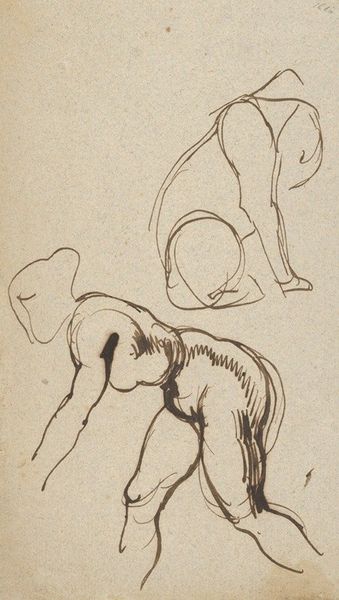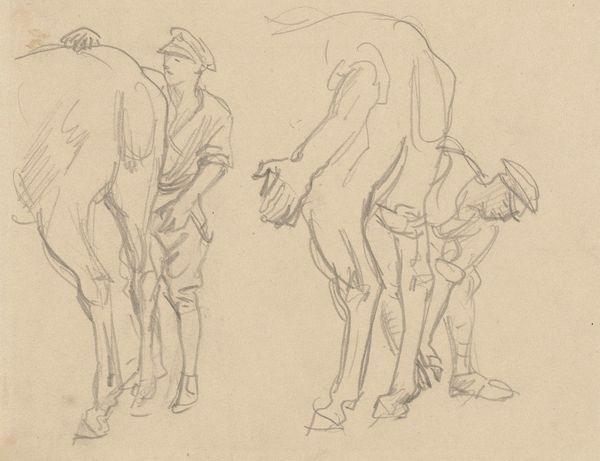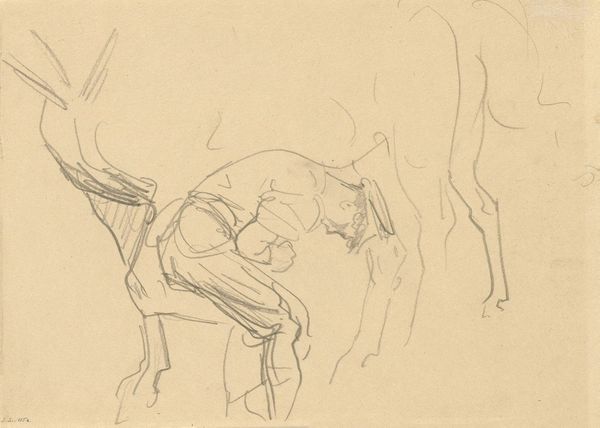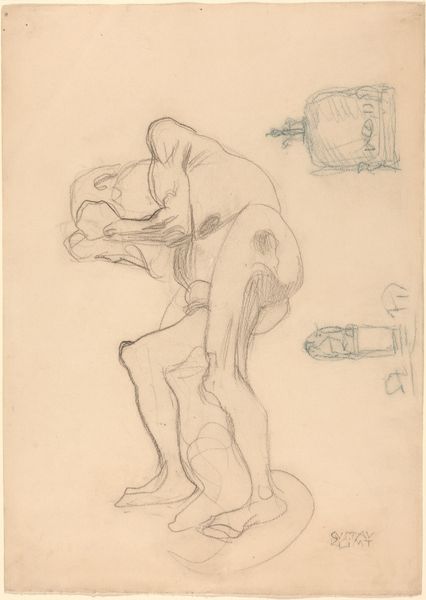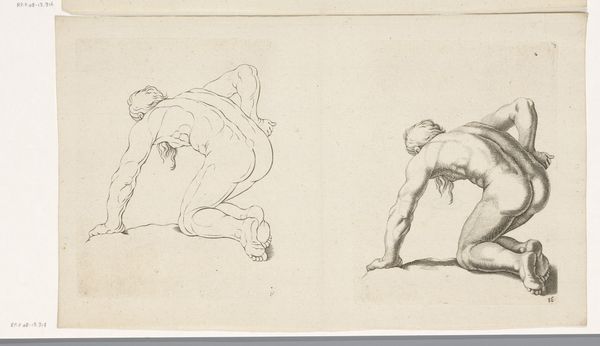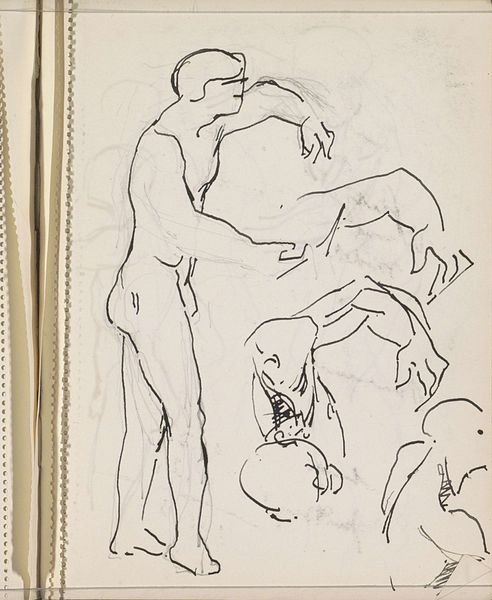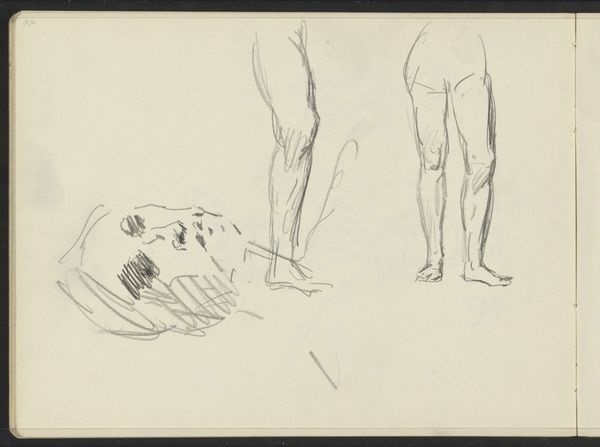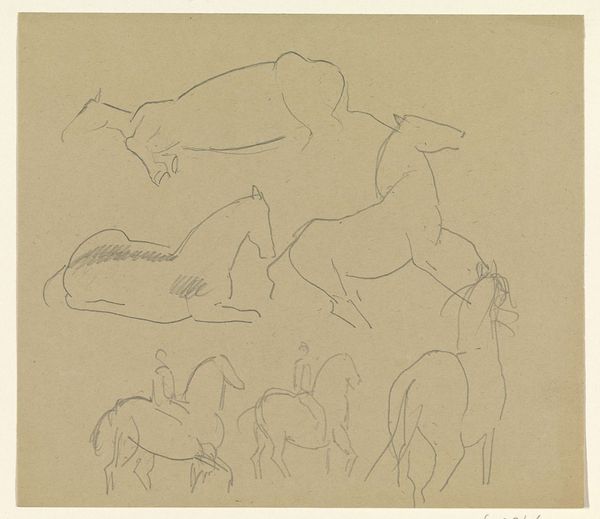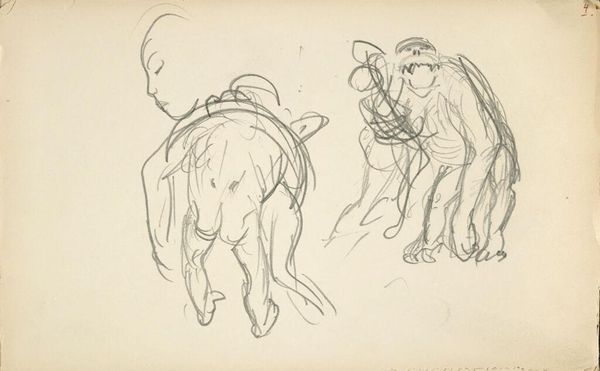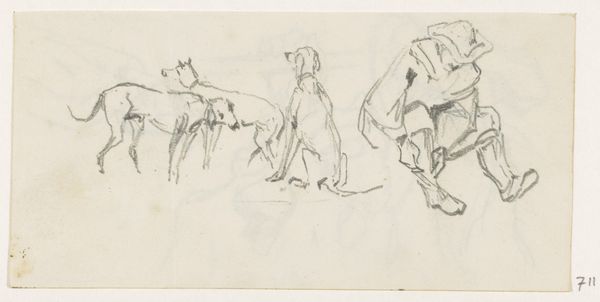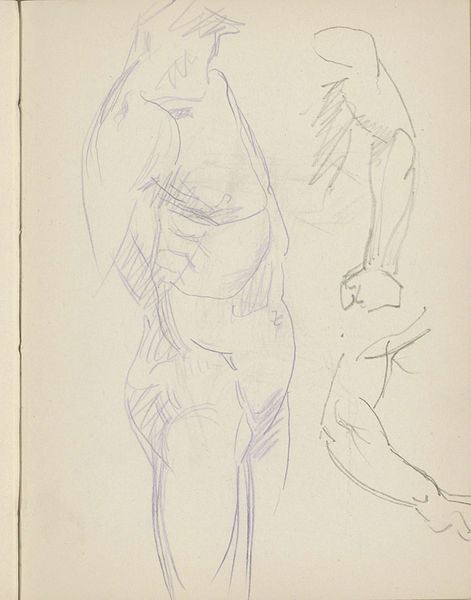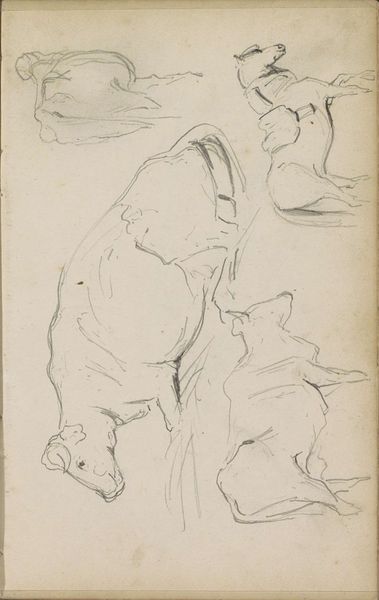
drawing, pencil
#
drawing
#
war
#
landscape
#
pencil
Copyright: Public Domain: Artvee
Editor: This is John Singer Sargent's "Studies for 'Shoeing Calvary Horses at the Front'," created in 1918 with pencil. It's quite stark and sketchy, almost fragmented, depicting figures and horses in varying degrees of completion. What draws my eye is the contrast between the delicate lines and the very rough subject of war. How do you interpret this work? Curator: Immediately, I observe the composition. The arrangement of forms across the page is asymmetrical, yet balanced. The repeated motif of the horse and human figures generates a visual rhythm. Note Sargent's handling of line— it is not descriptive, but rather, evocative, using hatching and contour to suggest form and volume without adhering to strict realism. Consider, for instance, the tension he creates simply through line weight. Editor: Yes, I can see that now. I notice some of the forms are barely suggested, just outlines. And yet, they convey movement and weight so effectively. Why do you think he chose to leave the forms so open and incomplete? Curator: Precisely. That openness is critical. Rather than providing a finished picture, the study invites the viewer to participate in the act of seeing and constructing the image. It prioritizes the process of visual thinking. Furthermore, the apparent lack of finish could itself be a comment on the fractured nature of war, never giving the viewer a sense of resolution. Editor: That's a perspective I hadn't considered. It’s interesting how much the *lack* of detail can add to the overall meaning. Curator: Indeed. Art's strength is in the careful curation of the artistic choices. It seems this sketch relies entirely on semiotics in the suggestion of motion to allow a closer introspection by the viewer. Editor: I've definitely learned to look beyond just what is there to understand the choices behind what is omitted. Thanks!
Comments
No comments
Be the first to comment and join the conversation on the ultimate creative platform.
